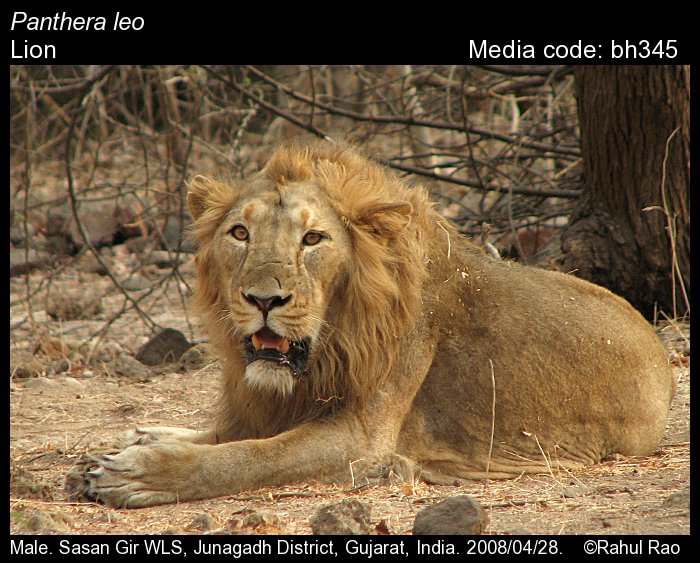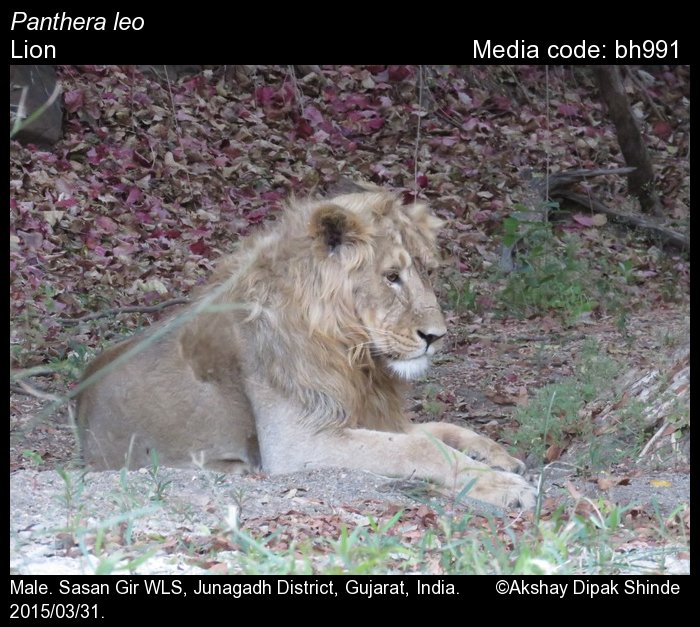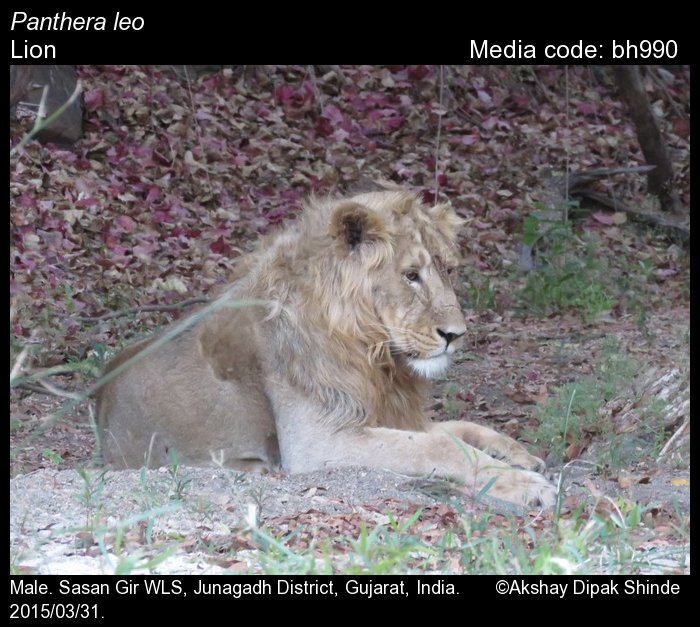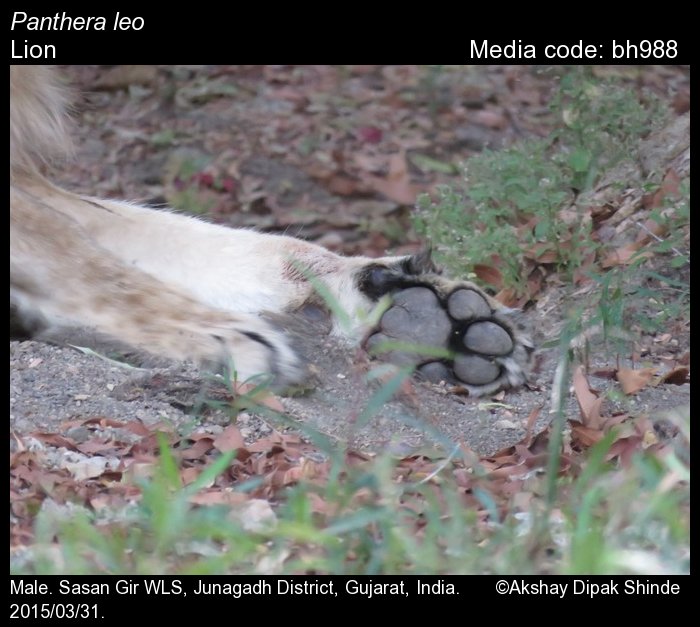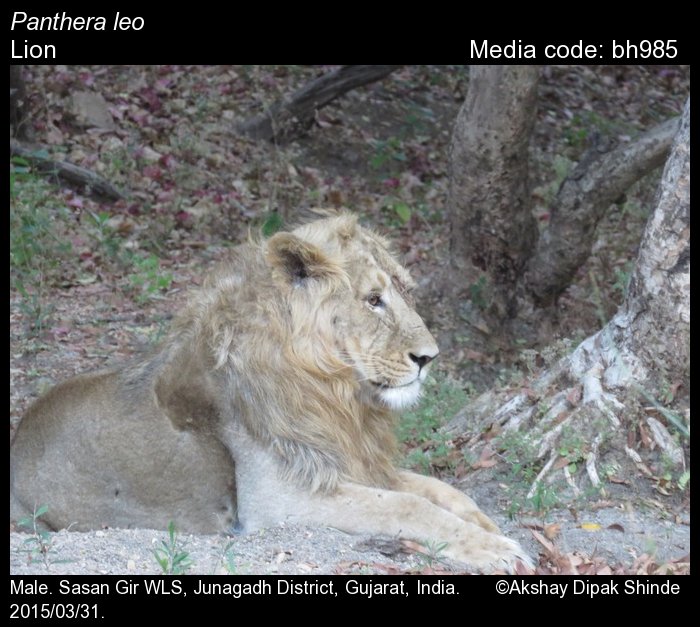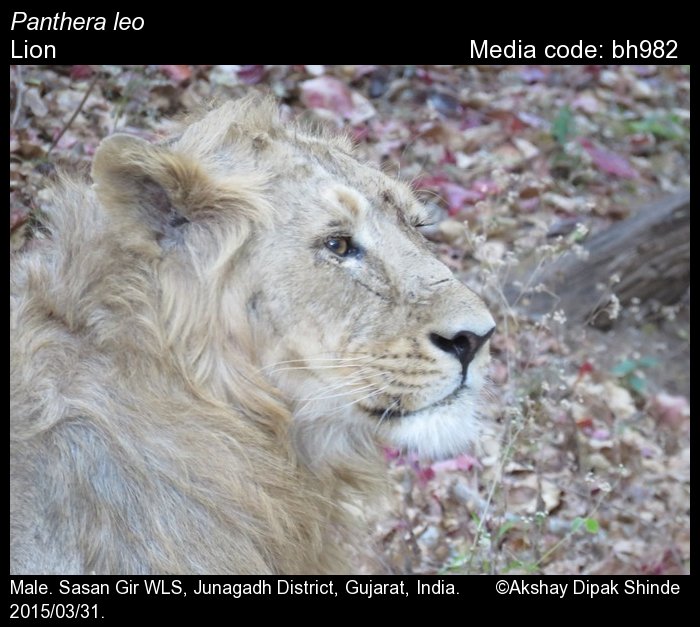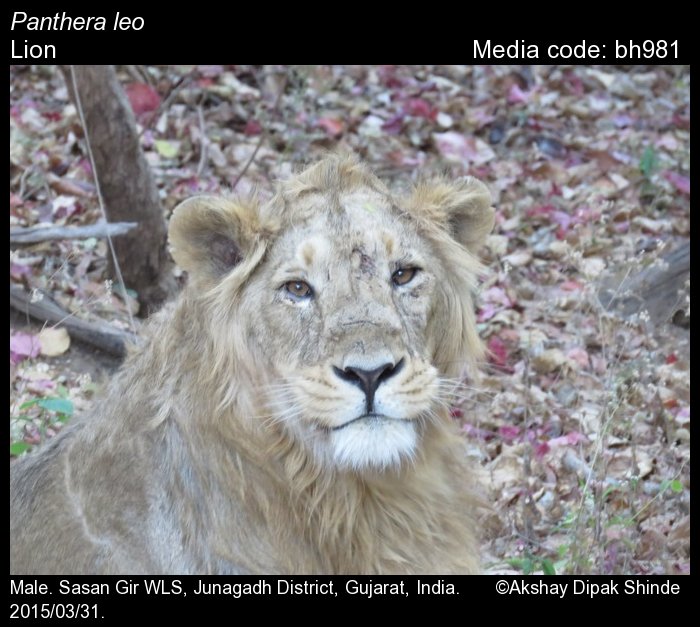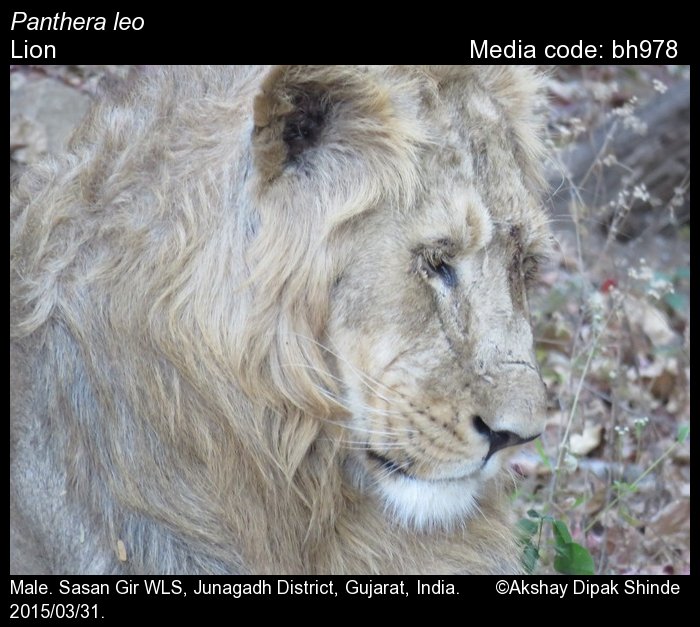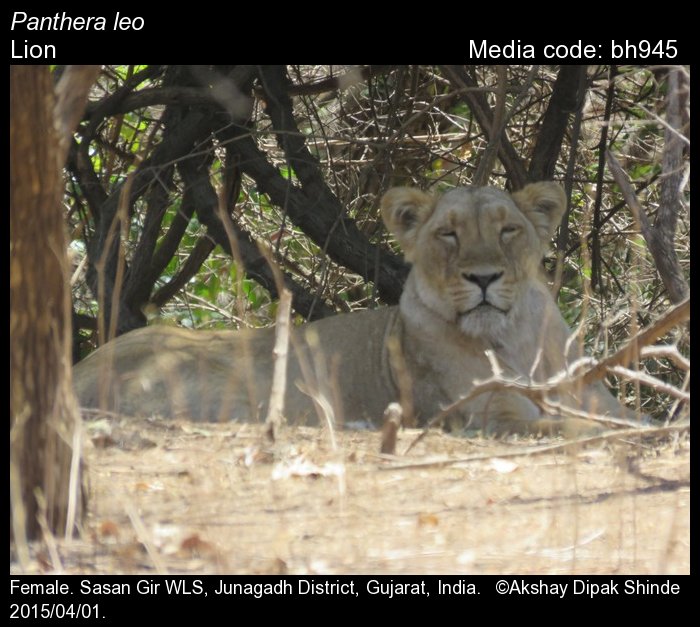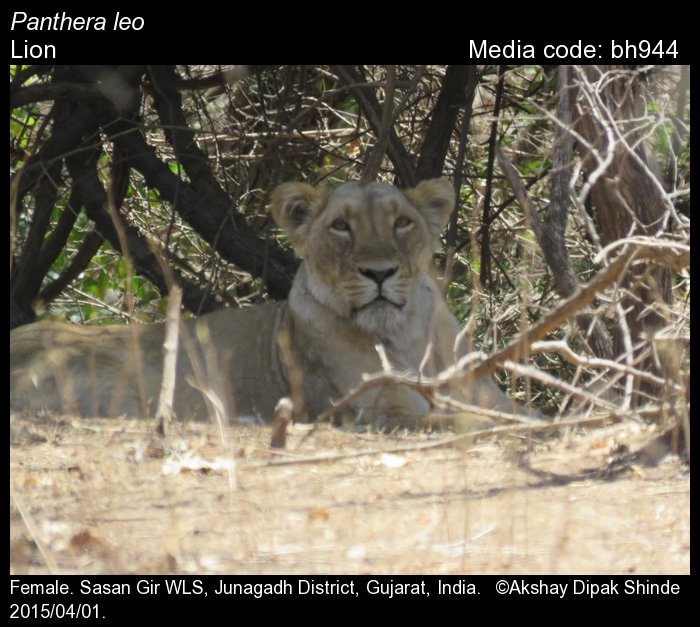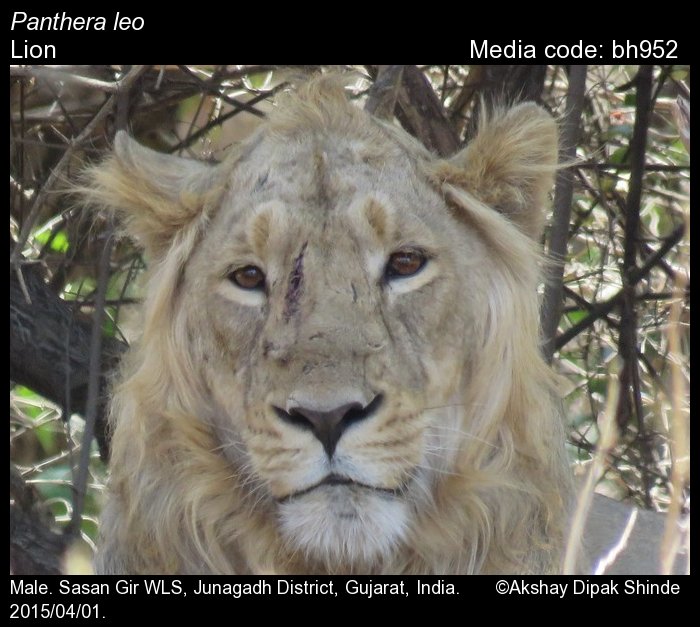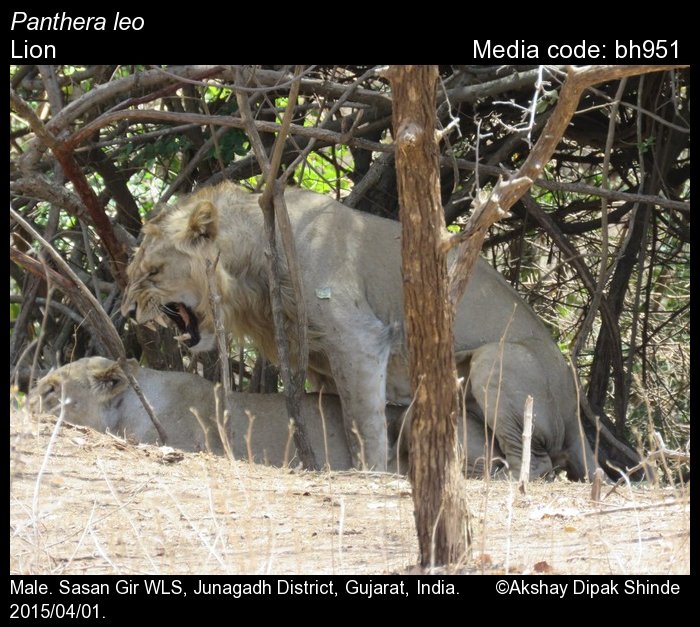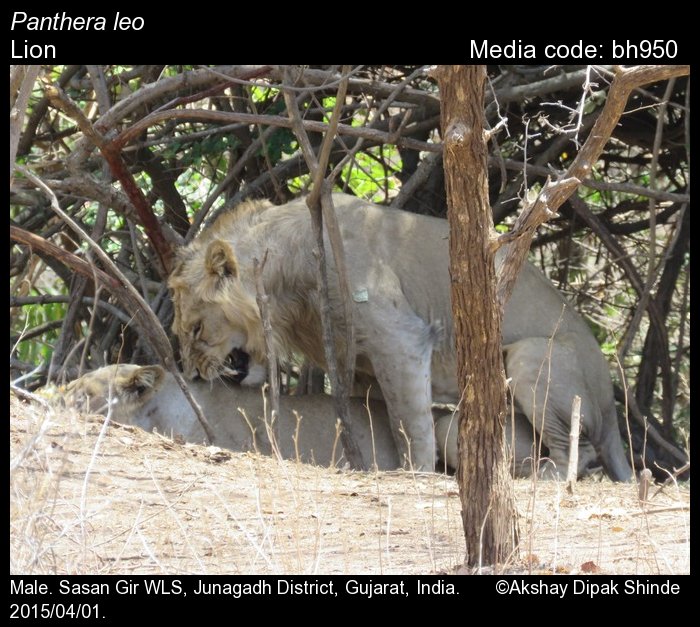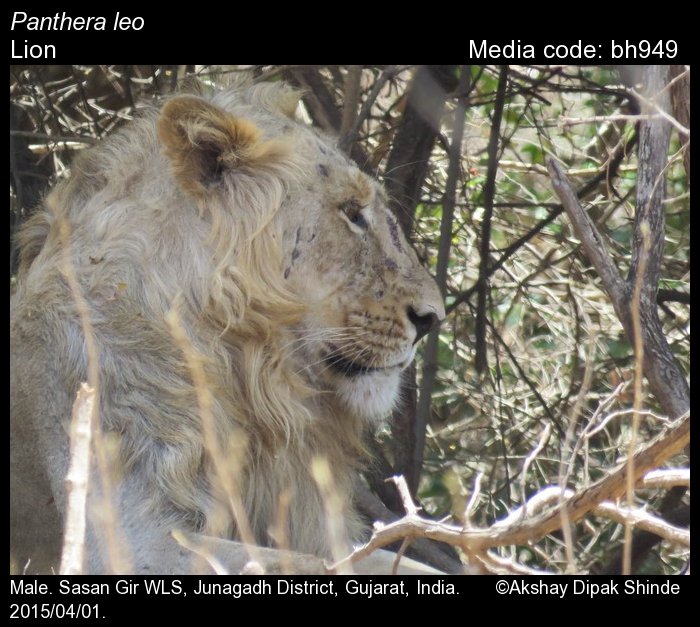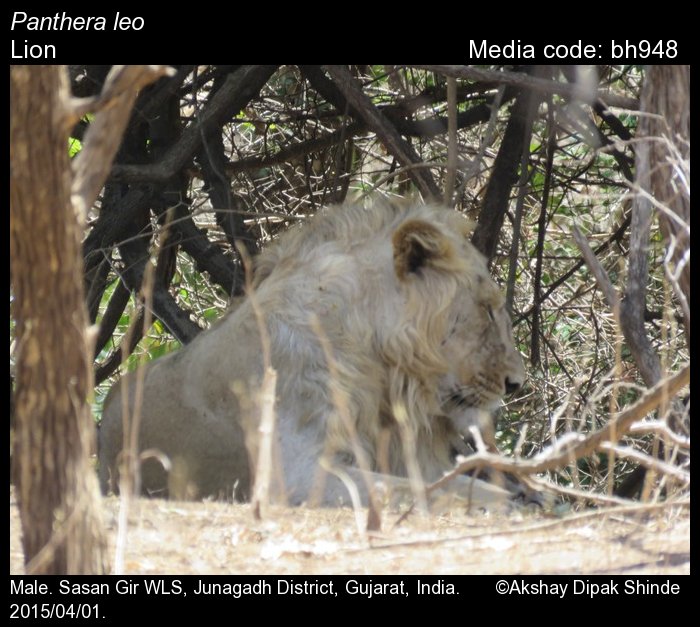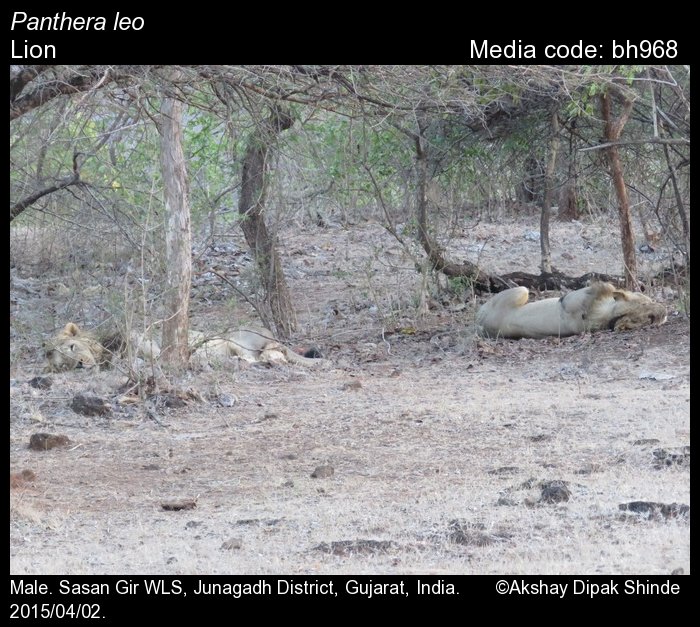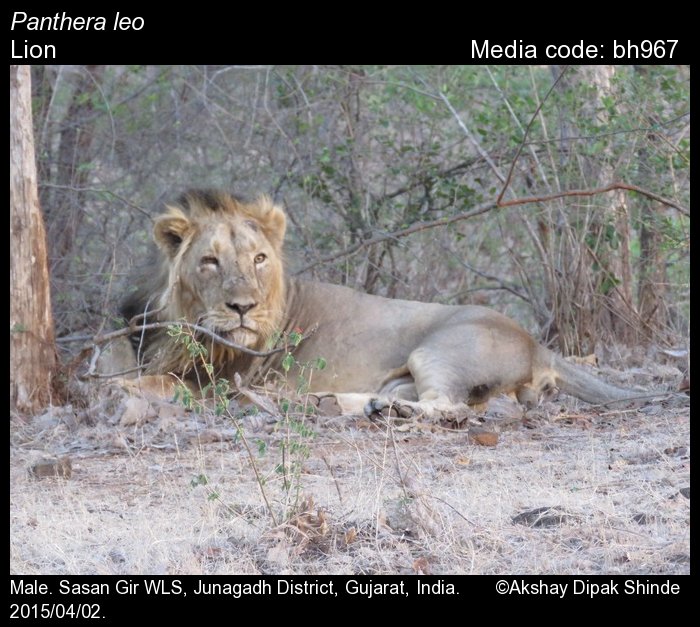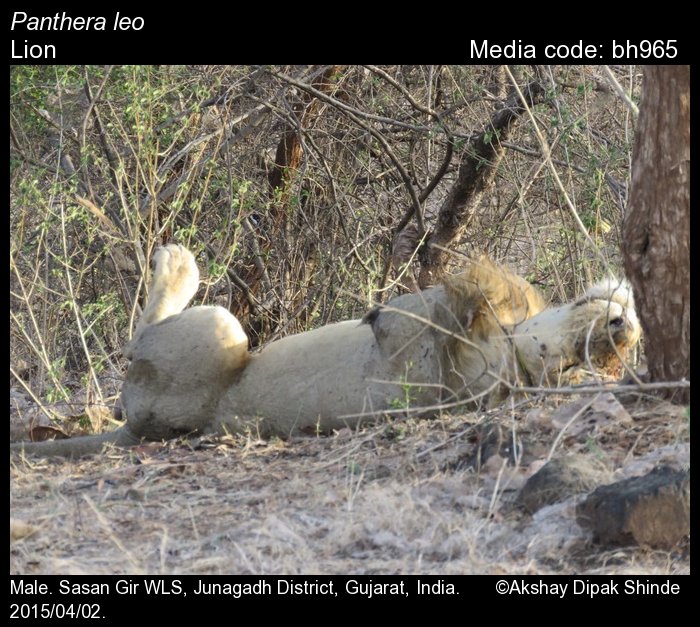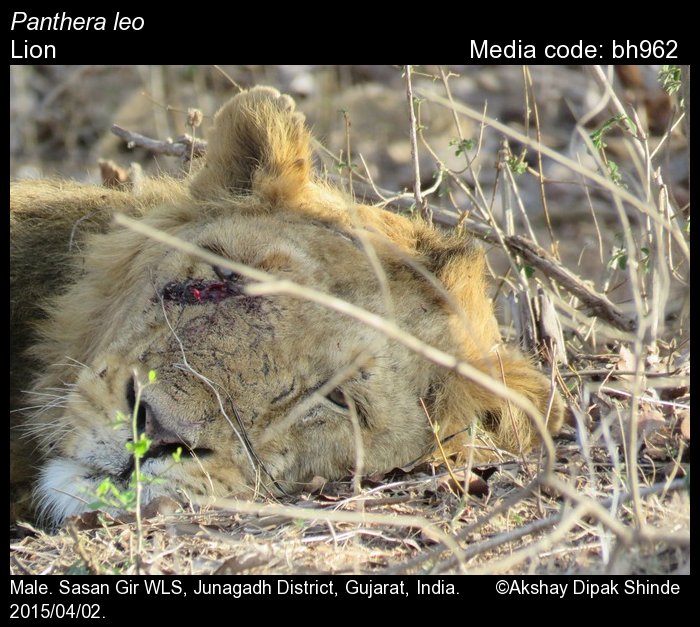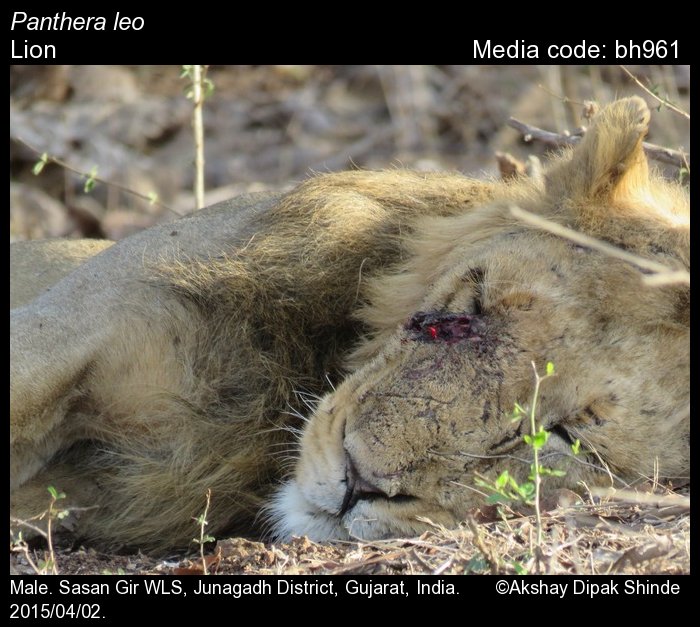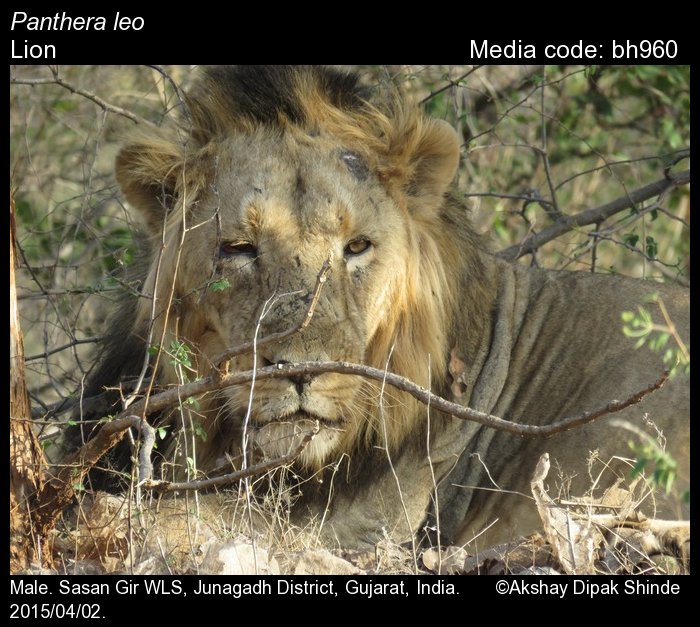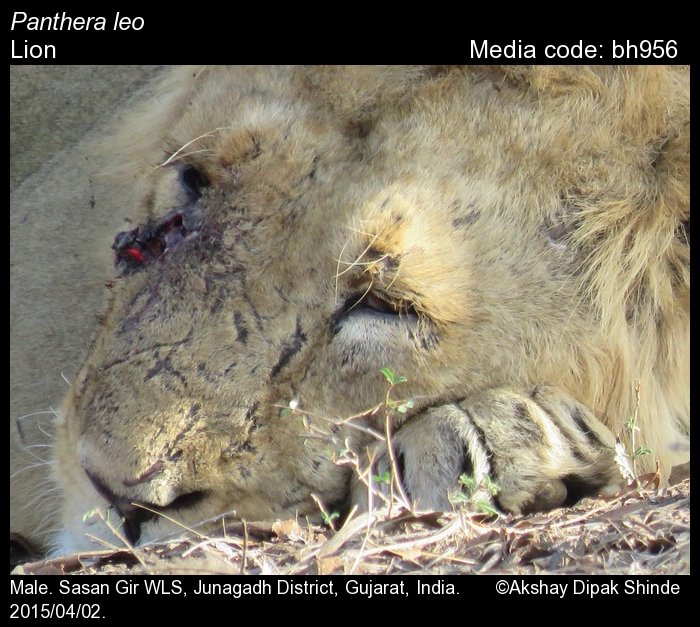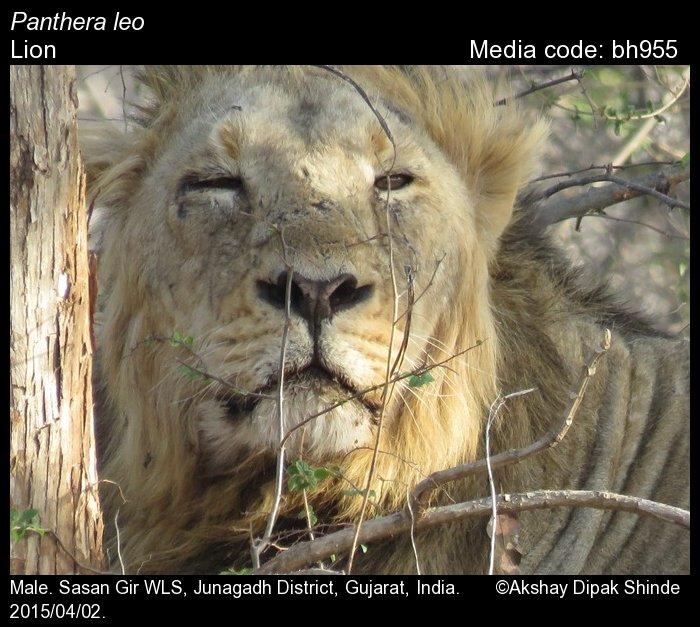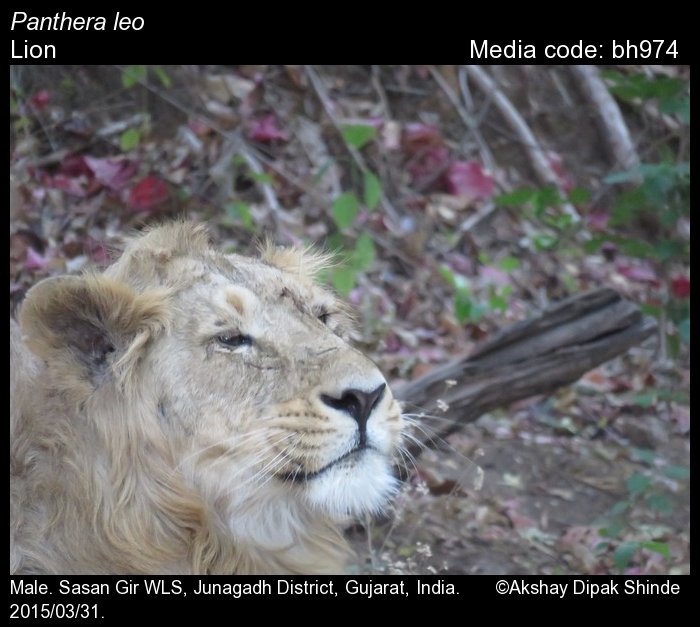
Subspecies in India
Lion has a complex and highly debated taxonomy especially at the subspecies level. Lion historically had a wide range of distribution that covered African continent, some parts of midddle east Asia, Persia, and Peninsular India. Due variations in the appearance and habits previous taxonomists recognized as many as 26 subspecies for various populations. This number subsequently decreased to 11 subspecies owing to more morphological data. Currently, after revising Lion taxonomy, taxonomists have suggested only two subspecies and synonymized others with either of these two viz. Panthera leo leo and Panthera leo melanochaita.
Previously recognized subspecies P. l. krugeri, P. l. bleyenberghi, P. l. roosvelti, P. l. somaliensis, P. l. massaica, P. l. sabakiensis, P. l. nyanzae, P. l. hollisteri, P. l. vernayi, and P. l. webbiensis are now synomyzed with P. l. melanochaita (the 'southern lion').
P. l. persica, P. l. senegalensis, P. l. kemptzi, and P. l. azandica are now synonymized with P. l. leo (the 'northern lion'). In other words P. l. leo now represents all the lion populations in western, northern and central Africa, Barbary Lion (now extinct) and the Asiatic Lion.![]() This spcies is listed as Vulnerable in the IUCN Red List of Threatened Species (https://www.iucnredlist.org/).
This spcies is listed as Vulnerable in the IUCN Red List of Threatened Species (https://www.iucnredlist.org/).
Photo Gallery and Species Biology
Lion historically was distributed over a wide geographical range that included Africa, most of middle eastern Asia and Peninsular India. Out of which, the population is Africa is now severely fragmented present only in north, east and south of central Africa, a few subpopulations in western Africa. In India, there has been even more drastic decline restricting the one single population only to Gir National Park of Gujarat. Lion is a distinctly sexually dimorphic species that also live in large prides having multiple individuals of different age groups and both sexes.
Asiatic population of lion shows a slightly varied habits and habitat preference. Due its restricted distribution, it seems to prefer deciduous forest that is mosaic of rocky terrain, patchy grasslands and agricultural fields. Male lion stays with pride only during breeding season, otherwise roams as single individual or accompanied by another male. Lion is apex predator, that forages on large variety of herbivores including livestock.
Conservation Status:![]() This spcies is listed as Vulnerable in the IUCN Red List of Threatened Species (https://www.iucnredlist.org/).
This spcies is listed as Vulnerable in the IUCN Red List of Threatened Species (https://www.iucnredlist.org/).
According to IUCN Red List assessment, lion population is decreasing all over its range. However, population in India is stable. Globally its population is estimated to be between 23,000 and 39,000 mature individuals out of which Indian population is represented by 523 individuals. threat to its survival mainly come from habitat loss and fragmemtation owing to agriculture, commercial and residential activities and loss of prey. Hunting, poaching and retaliatory killing has also caused a serious damage to its population globally. Many isolated populations, especially Indian population is facing another risk of extinction due to wildlife diseases. Indian population shows high amount of inbreeding thus leading to inbreeding depression.
| State | Jan | Feb | Mar | Apr | May | Jun | Jul | Aug | Sep | Oct | Nov | Dec | No date |
|---|---|---|---|---|---|---|---|---|---|---|---|---|---|
| Andaman and Nicobar Islands | |||||||||||||
| Andhra Pradesh | |||||||||||||
| Arunachal Pradesh | |||||||||||||
| Assam | |||||||||||||
| Bihar | |||||||||||||
| Chandigarh | |||||||||||||
| Chhattisgarh | |||||||||||||
| Dadra & Nagar Haveli | |||||||||||||
| Daman & Diu | |||||||||||||
| Delhi | |||||||||||||
| Goa | |||||||||||||
| Gujarat | 1 | 5 | 3 | ||||||||||
| Haryana | |||||||||||||
| Himachal Pradesh | |||||||||||||
| Jammu and Kashmir UT | |||||||||||||
| Jharkhand | |||||||||||||
| Karnataka | |||||||||||||
| Kerala | |||||||||||||
| Ladakh UT | |||||||||||||
| Lakshadweep | |||||||||||||
| Madhya Pradesh | |||||||||||||
| Maharashtra | |||||||||||||
| Manipur | |||||||||||||
| Meghalaya | |||||||||||||
| Mizoram | |||||||||||||
| Nagaland | |||||||||||||
| Odisha | |||||||||||||
| Paschimbanga | |||||||||||||
| Pondicherry | |||||||||||||
| Punjab | |||||||||||||
| Rajasthan | |||||||||||||
| Sikkim | |||||||||||||
| Tamil Nadu | |||||||||||||
| Tripura | |||||||||||||
| Uttar Pradesh | |||||||||||||
| Uttarakhand | |||||||||||||
| West Bengal | |||||||||||||
| Total | 1 | 5 | 3 |
Page citation
Anonymous 2025. Panthera leo Linnaeus, 1758 – Lion. In Bayani, A., R. Chakravarty, and K. Kunte (Editors) (Chief Editors). Butterflies of India, v. 1.13. Published by the Indian Foundation for Butterflies. URL: https://www.mammalsofindia.org/panthera-leo, accessed 2025/10/30.

